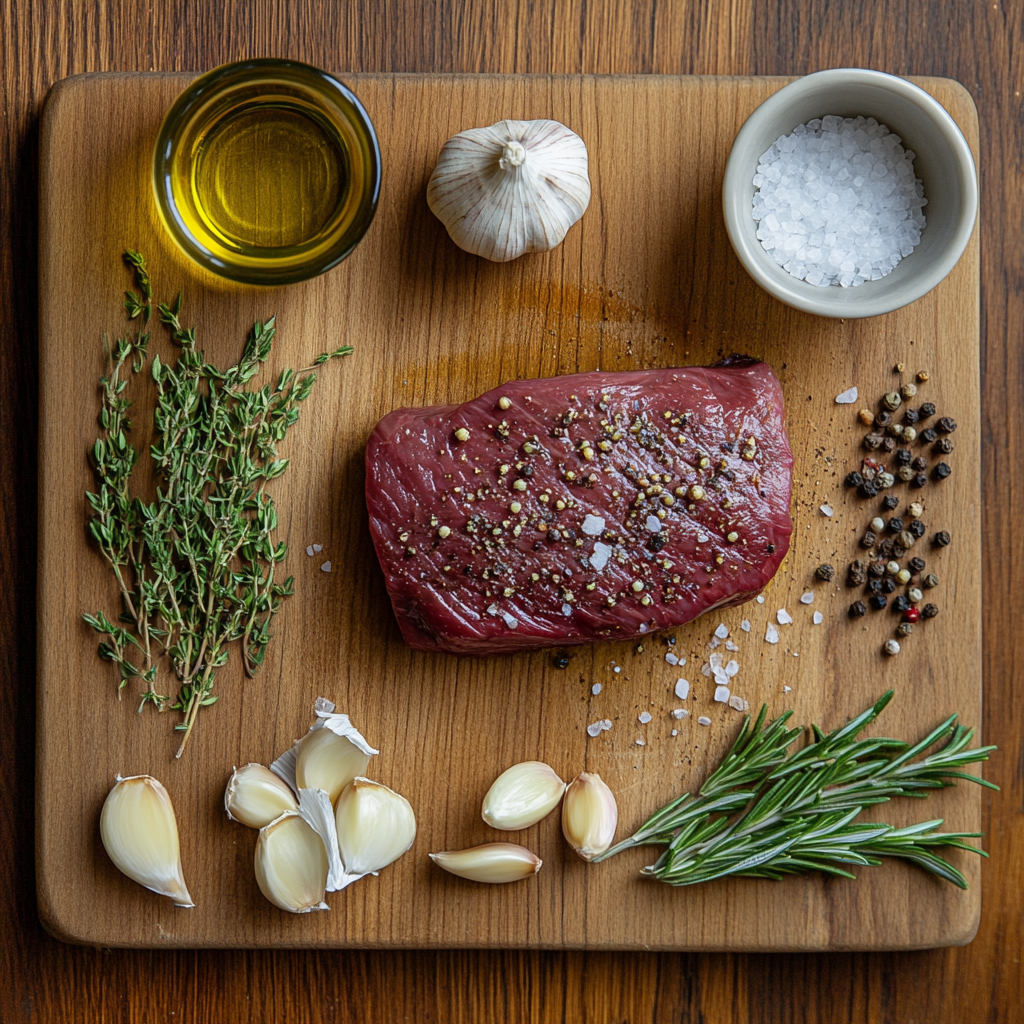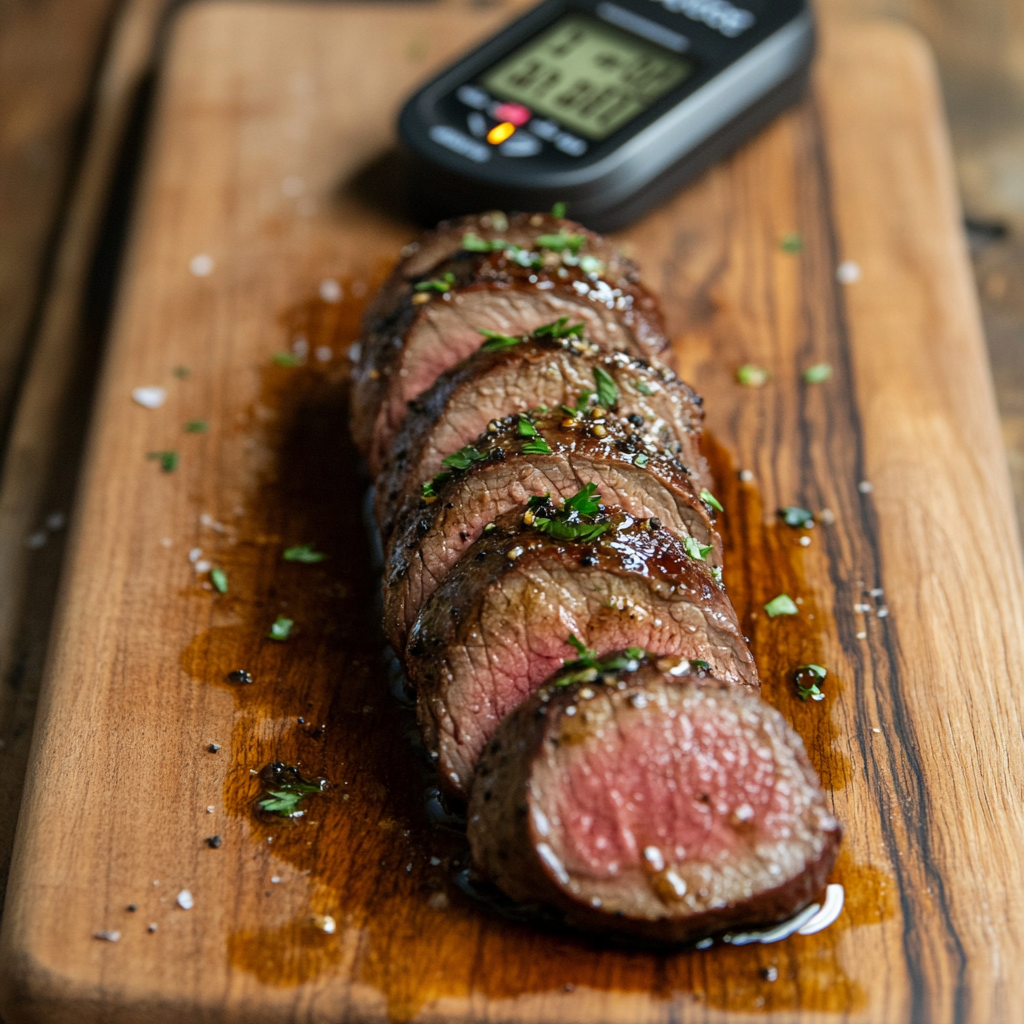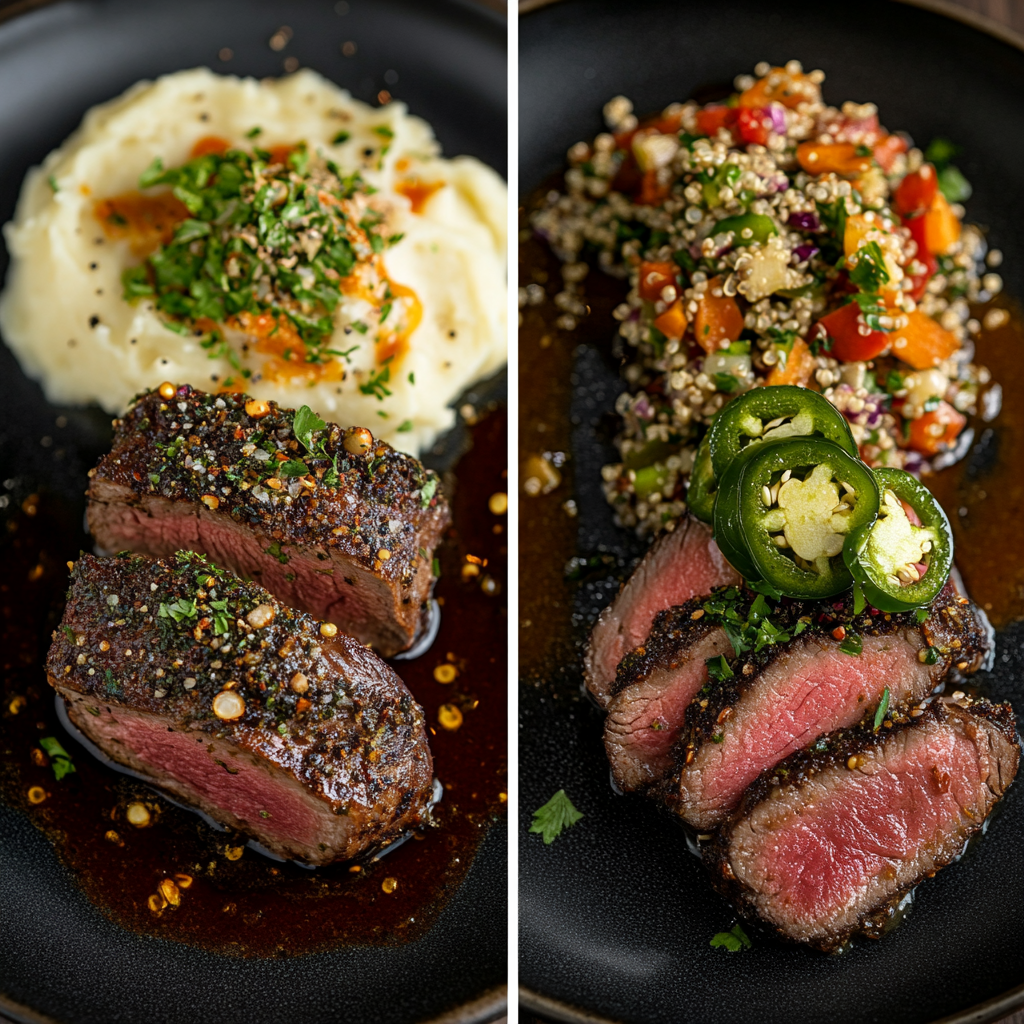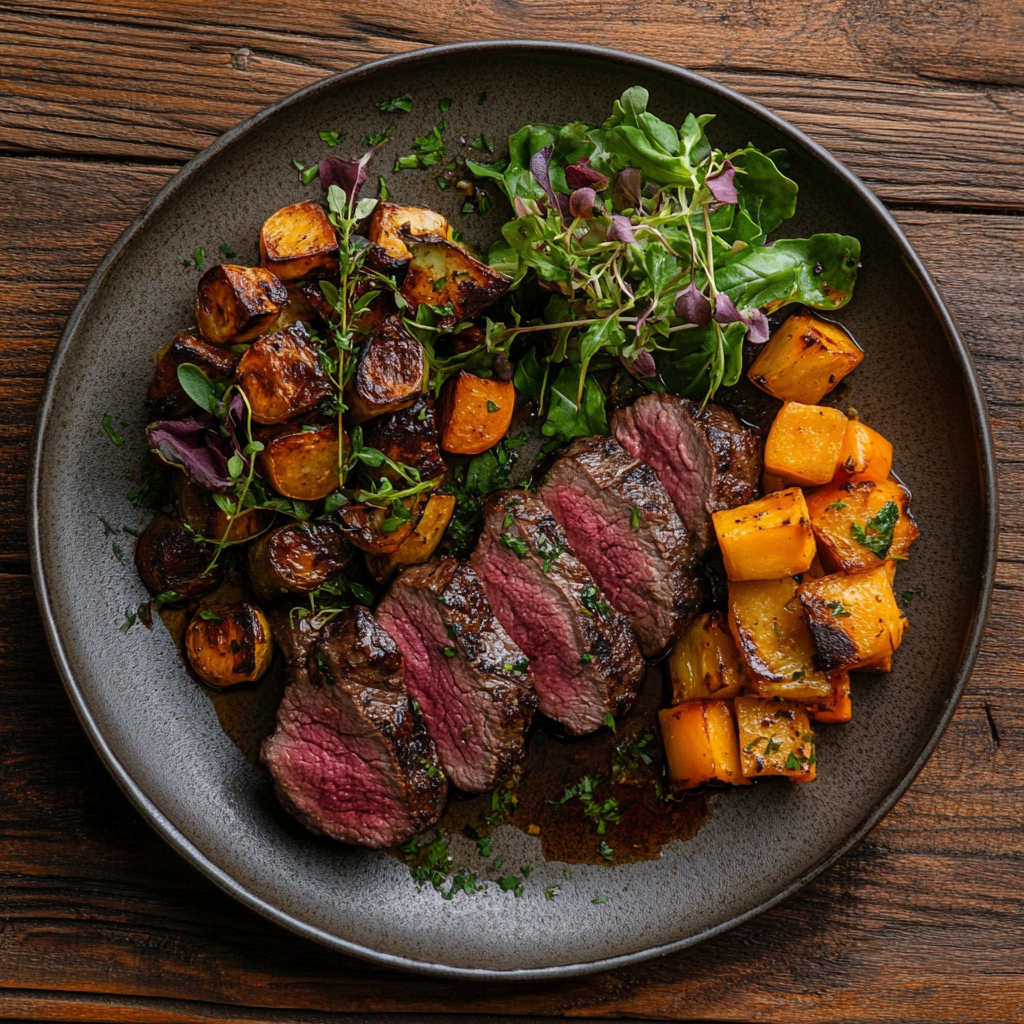Introduction
If you’re looking for a remarkable way to elevate your dining experience, elk tenderloin is a prime choice. This exquisite cut of wild game boasts a rich, unique flavor that pairs beautifully with various seasonings and sides. Perfect for special occasions or a cozy dinner at home, elk tenderloin is also an excellent option for those seeking leaner, nutrient-dense proteins. Cooking it to a perfect medium rare will ensure the meat remains tender and juicy, making it a showstopper on your table.
Elk tenderloin is often considered the crown jewel of wild game meat due to its tenderness and rich flavor profile. It’s not only a delicious choice but also a healthier alternative to traditional meats, as it is lower in fat and calories while being high in protein. If you enjoy hearty meals that inspire culinary creativity, keep reading for mouthwatering elk tenderloin recipes that are perfect for dinner. Whether you’re hosting a holiday gathering or simply treating yourself to a gourmet meal, these recipes will impress your guests and tantalize your taste buds.
Moreover, elk is versatile enough to work in various cuisines, from classic American dishes to exotic international fare. As we delve into these recipes, you’ll find options that cater to diverse dietary preferences and occasions. Let’s embark on a culinary journey that will highlight the joys of cooking with elk tenderloin and provide you with tools and techniques to achieve the ultimate in flavor and presentation.
Ingredients Overview
Main Ingredients for Elk Tenderloin Recipes
- Elk Tenderloin (1-2 lbs): The star ingredient that provides the robust flavor and tender texture.
- Olive Oil (or alternative cooking oil): Essential for marinating and cooking, adding moisture and flavor.
- Garlic (fresh or powdered): Adds aromatic depth, enhancing the meat’s natural flavors.
- Rosemary (fresh or dried): A fragrant herb that complements the richness of elk beautifully.
- Thyme (fresh or dried): Offers a subtle earthiness, rounding out the dish’s flavor profile.
- Salt (sea salt recommended): Essential for enhancing all the flavors and ensuring a well-seasoned dish.
- Pepper (freshly cracked for best flavor): Adds a hint of heat that balances the savory elements of the dish.
Possible Substitutions
- Olive Oil: Can be substituted with avocado oil or melted coconut oil for a different flavor profile. Grapeseed oil is also a great neutral option.
- Herbs: If fresh herbs are unavailable, dried herbs can be used; just remember that dried herbs are more potent than fresh, so use about one-third of the amount.
- Garlic: Substitute with shallots or garlic powder for a milder taste, or use roasted garlic for a sweeter, more complex flavor.
Consider adding a splash of balsamic vinegar or a sprinkle of lemon zest to brighten up the dish. For additional flavor profiles and preparation ideas, check out our Snacks category for recipes that pair beautifully with elk tenderloin.

Tools Needed
To prepare your elk tenderloin, you will need the following kitchen tools:
- Sharp Chef’s Knife: Essential for trimming and slicing the tenderloin, ensuring clean cuts.
- Cutting Board: A sturdy wooden or plastic cutting board will work best for safety and hygiene.
- Skillet or Grill Pan: Ideal for searing the meat, creating a delicious crust while keeping the interior juicy.
- Meat Thermometer: A must-have tool to check for perfect medium rare, preventing overcooking.
- Tongs: Useful for flipping the tenderloin without piercing the meat, which helps retain juices.
- Serving Platter: For presentation, choose a rustic wooden or elegant ceramic platter to showcase your dish beautifully.
If you don’t have a skillet, an oven-safe dish can also work for cooking your elk tenderloin. Consider alternatives like cast-iron skillets for superior heat retention or even sous-vide equipment for precise temperature control. Explore our Dinner category for more recipes that require similar tools, offering you additional cooking inspiration.
Step-by-Step Instructions
Recipe 1: Classic Seared Elk Tenderloin
- Preparation: Begin by removing the elk tenderloin from the refrigerator and letting it sit at room temperature for about 30 minutes. This helps ensure even cooking and better flavor absorption.
- Seasoning: Rub the tenderloin generously with olive oil, then sprinkle with salt, pepper, garlic, rosemary, and thyme. Ensure it’s evenly coated to enhance the flavors throughout the meat.
- Preheat the Skillet: Heat a skillet over medium-high heat until hot. Add a drizzle of olive oil to the pan, allowing it to shimmer before adding the meat.
- Sear the Meat: Place the tenderloin in the skillet. Sear for about 4-5 minutes on each side for medium rare, creating a beautiful crust. Use a meat thermometer to ensure the internal temperature reaches 130-135°F, which is perfect for medium rare.
- Resting: Once cooked, remove the tenderloin from the skillet and let it rest for 10 minutes before slicing. This helps retain the juices and makes the meat even more tender.
- Serving: Slice against the grain into medallions and serve with your choice of sides, like roasted vegetables or a fresh salad, for a balanced meal.
For other cooking methods, check out our Breakfast category for recipes with similar techniques, such as using a slow cooker or sous-vide for perfectly tender results.

Flavor Variations
- Herb Crusted: Add breadcrumbs to your herb mixture for a crunchy texture. Mix panko with grated Parmesan and herbs for an Italian twist.
- Spicy Rub: Mix chili powder, cumin, and a dash of cayenne with your seasoning for a kick. This adds warmth and depth to the elk’s natural flavors.
- Sweet Glaze: Brush the tenderloin with honey or maple syrup during the last minute of cooking for a sweet finish that contrasts beautifully with the savory spices.
- Asian-Inspired Marinade: Use soy sauce, ginger, and sesame oil as a marinade for a different flavor profile. This can be served with stir-fried vegetables for a complete meal.
- Mediterranean Twist: Incorporate olives, feta cheese, and sundried tomatoes into your dish for a refreshing Mediterranean flair. Serve with a side of couscous or quinoa.
If you’re looking for complementary dishes, explore our Snacks category for ideas that can pair well with elk tenderloin, like stuffed mushrooms or savory pastries.

Expert Tips
- Avoid Overcooking: Medium rare is the sweet spot for elk tenderloin. Always use a meat thermometer to check the internal temperature, as cooking times can vary based on thickness.
- Let it Rest: Resting the meat is crucial. It allows juices to redistribute, enhancing flavor and tenderness. Cover loosely with foil to keep it warm.
- Use a Sharp Knife: A sharp knife will make slicing easier and help prevent tearing the meat, ensuring clean, appetizing cuts.
Additionally, consider marinating the elk for a few hours before cooking to infuse even more flavor. For similar techniques and recipes, explore our Dinner category for other game meats or hearty options.
Nutritional Information
Elk tenderloin is a lean source of protein, low in fat, and packed with essential vitamins and minerals. A typical serving (about 3 oz) contains approximately:
- Calories: 160-180, making it a great option for those watching their caloric intake.
- Protein: 25g, providing a substantial amount of muscle-building nutrition.
- Fat: 5g, which is significantly lower than traditional beef, offering a healthier alternative.
- Iron: 3mg (15% of the Daily Value), essential for energy and metabolic function.
Additionally, elk meat contains B vitamins, particularly B12, which is vital for brain health and red blood cell production. For more in-depth nutritional insights, check out this trusted source for comprehensive details on wild game meats and their benefits.
Serving Suggestions
Pair your elk tenderloin with sides like roasted vegetables, wild rice, or a fresh salad. A light vinaigrette can enhance the meal’s flavor profile without overpowering the tenderloin. Here are some ideas:
- Roasted Seasonal Vegetables: Toss carrots, Brussels sprouts, and bell peppers in olive oil and season with salt and pepper before roasting.
- Wild Rice Pilaf: Cook wild rice with broth, onions, and a mix of herbs for a flavorful side that complements the elk beautifully.
- Fresh Garden Salad: A simple arugula salad with cherry tomatoes, cucumbers, and a balsamic vinaigrette can add brightness to the meal.
For more side dish ideas, visit our Dinner category for recipes that highlight seasonal ingredients and pair well with elk tenderloin.

Storage Tips
- Refrigeration: Store leftovers in an airtight container in the fridge for up to three days. Make sure to allow the meat to cool before sealing to maintain freshness.
- Freezing: For longer storage, wrap the cooked elk tenderloin tightly in plastic wrap and then aluminum foil. It can be frozen for up to three months, preserving its flavor and texture.
- Reheating: Thaw in the refrigerator overnight and reheat in the oven at 350°F until warmed through. Alternatively, use a skillet on low heat to gently warm the meat without drying it out.
Additionally, consider slicing the elk before freezing to make it easier to reheat individual portions later.
FAQs
Can I substitute elk tenderloin with another meat?
Yes, you can use venison or beef tenderloin as alternatives, but adjust cooking times as necessary due to differences in fat content and flavor. Lamb can also be a great substitute, though its flavor is distinctly different.
How do I know when elk tenderloin is done?
Use a meat thermometer to check the internal temperature. For medium rare, aim for an internal temperature of 130-135°F. If you prefer it more well done, adjust the cooking time accordingly, keeping in mind that elk is best when not overcooked.
Can I make this ahead of time?
Yes, you can marinate the elk tenderloin ahead of time, ideally overnight, to infuse flavors. You can also cook it in advance and reheat it for serving, though freshly cooked is best for optimal texture.
For more common questions related to cooking, check out our Breakfast category for additional tips on meal prep and cooking techniques.
Conclusion
Elk tenderloin is not just a meal; it’s an experience that brings the flavor of the wild to your dining table. Its versatility allows for various preparations and flavors, making it suitable for any occasion. Cooking it to a perfect medium rare showcases its unique wild game flavor, ensuring a delightful dining experience.
